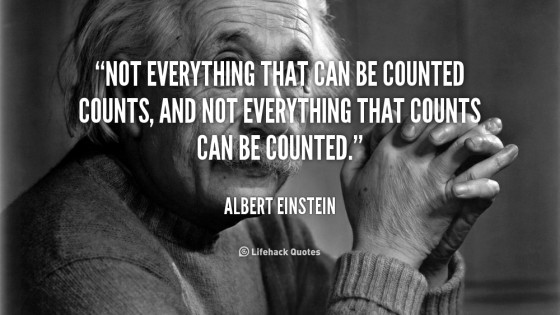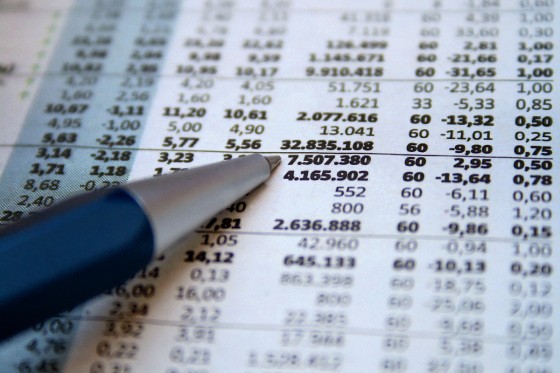My favourite quote and a good reminder for me as an evaluator:

Photo Source: Wikimedia Commons: https://commons.wikimedia.org/wiki/File:Albert_Einstein_(portret).jpg
Telling stories to convey value
I’ve written a few blog posts about measurement. One was about food snapshots I compiled as a baseline indicator for change over time. The idea was that by telling the story of a community and it’s relationship to food we could see change over time based on our work in that community. Another two are about a photovoice project that illustrate the many benefits of having a community garden plot for government assisted refugees in an urban setting. I’ve also facilitated multiple storytelling circles for community garden leaders where connections are made, resources are shared, gardens’ capacities are strengthened, and we all felt so confirmed that community gardens bring so much to our society. The language of stories is an important one, but not everybody or every sector speaks in that language and sometimes we have to figure out how to translate our messages into other kinds of languages – like numbers –

Creative Commons Source: http://www.flickr.com/photos/franganillo/3678747186
Measuring the triple bottom line using numbers
An interesting method designed to translate social benefit into a numerical value is Social Return on Investment or SROI. Originally titled something like ‘social, economic, and societal return on investment’ (unfortunately SESROI didn’t catch on… 🙂, the goal of this method is to ‘internalize’ the ‘externalities’ to the economy, or the triple bottom line – economy, people, environment. In other words, because our wellbeing doesn’t have a direct dollar value, very important aspects of our life get left out of being ‘valued’ in the economy. So the goal behind SROI is to come up with a way to count those things that really count in our lives. The ultimate vision of such a thing is to get the resources (government and private dollars) flowing towards projects and programs that have high social benefit, not just to those projects that result in monetary profit.
Example of an SROI ratio 1:3.50 – for every one dollar of investment to this program, there is $3.50 of value (economic, social (personal), and societal)
Converting social value into numbers
So how do they do this magic of making numbers? Well there are a number [ha ha] of different ways they do this. One would be to ask ‘what would you be willing to pay for the joy of being in the garden?’ OR ‘what dollar amount could we pay you to stay home from the garden?’. They also have this funny thing called a QALY – Quality Adjusted Life Year – or a monetary value that represents one year of perfect health. I read somewhere that $50,000 was the standard number they’ve been using for some time… upon which there seems to be quite a lot of debate. Another method is ‘wellbeing valuation’.
Limitations, because there’s always limitations

Creative Commons Source: http://bit.ly/1Sxsb6K
Squeezing social and environmental benefit into an economic language is awkward… and anyway, do we have to fit everything of value into a capitalist economic paradigm that undermines our environment and well-being everyday? You’re right, that sounds like a bad idea. But I kind of think of it in a sink or swim way… a major global language of our age is money; so in some ways we end up by not getting much done when we’re speaking in a different language. The way that SROI attempts to make up for this limitation is by having a rich qualitative story around the numbers ratio.
What to do?
Personally I’m very torn, but I’m open to explore this method and see through my own experience where we can get to. Over the next few months I’ll be part of an SROI project looking to value the network-facilitation role we play in food systems work. Stay tuned for the results.
Resources:
- check out this video of an SROI conducted in Barcelona.
- work by the pioneers in this method the New Economics Foundation, a UK thinktank with a very cool mandate of: “…promoting social, economic and environmental justice. Our aim is to transform the economy so that it works for people and the planet.”
- a paper on the ‘7 principles problems with SROI‘ by Simetrica
~Blog post by Miranda Cobb, Research and Evaluation Coordinator for the Our Food Project of the Ecology Action Centre



